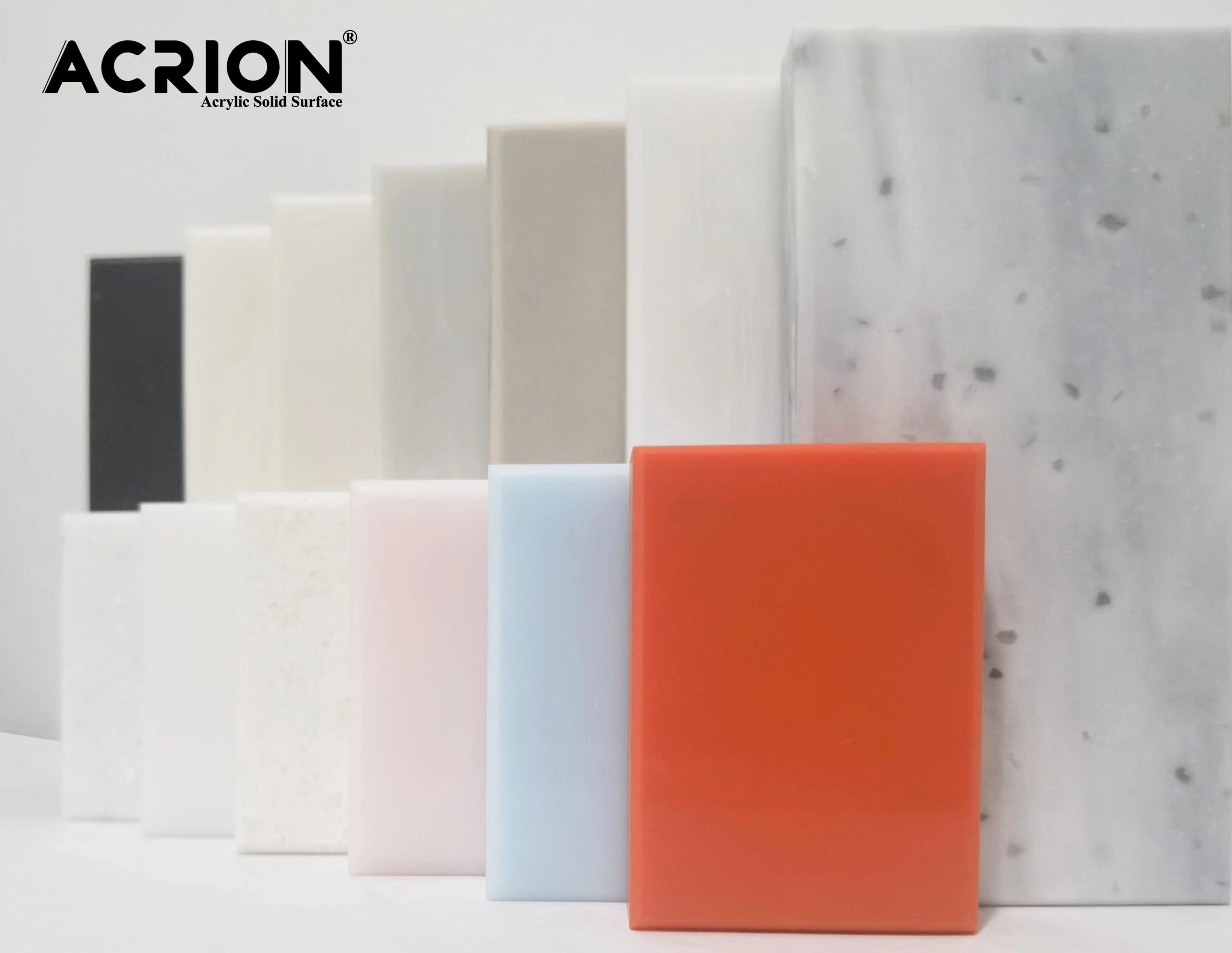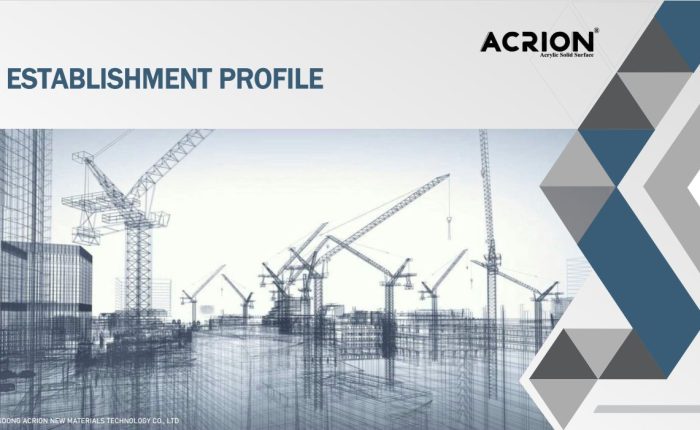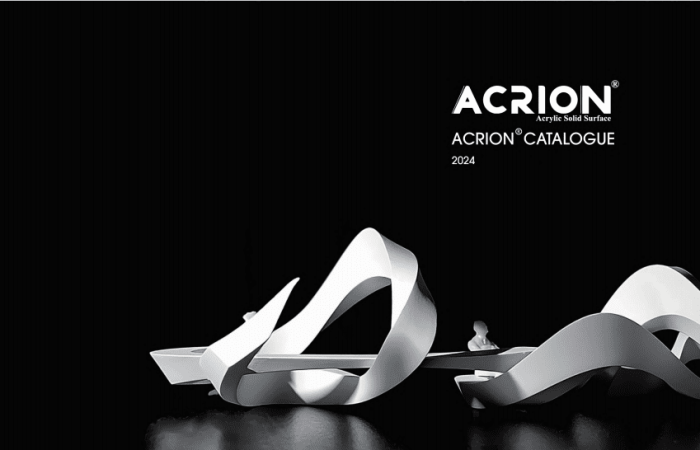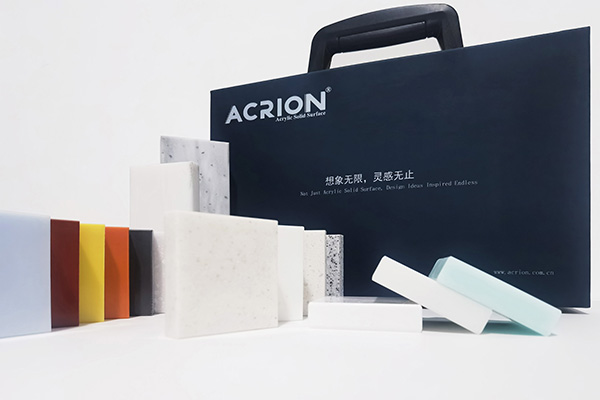การวิเคราะห์ความยืดหยุ่นและความเป็นพลาสติกของพื้นผิวของแข็งอะคริลิค
ความยืดหยุ่นและความเป็นพลาสติกของพื้นผิวที่เป็นของแข็งของกรดอะคริลิกได้รับอิทธิพลร่วมกันจากโครงสร้างโมเลกุลของเรซินกลไกการบ่มและสภาวะภายนอก การวิเคราะห์ต่อไปนี้ดำเนินการจากสามมิติ: คุณสมบัติของวัสดุปัจจัยที่มีอิทธิพลและสถานการณ์การใช้งาน:
ก่อนอื่นแหล่งที่มาและอาการของความยืดหยุ่น
ความยืดหยุ่นของห่วงโซ่โมเลกุล
ความยืดหยุ่นของอะคริลิคเรซินส่วนใหญ่ขึ้นอยู่กับโครงสร้างของกลุ่มเอสเตอร์ (-COO-) และกลุ่มอัลคิล (-R) ในห่วงโซ่หลัก ตัวอย่างเช่นการแนะนำกลุ่มอัลคิลสายยาว (เช่น C8-C12) สามารถเพิ่มปริมาตรอิสระของโซ่โมเลกุลลดอุณหภูมิการเปลี่ยนแก้ว (TG) และช่วยเพิ่มความยืดหยุ่น หากมีการแนะนำโมโนเมอร์ที่ยืดหยุ่น (เช่นบิวทิลอะคริเลต) ลงในห่วงโซ่หลักการเคลือบสามารถทนได้ 180 °การดัดงอที่อุณหภูมิห้องโดยไม่แตก อย่างไรก็ตามเมื่อสัดส่วนของโมโนเมอร์แข็ง (เช่นเมธิลเมทาคริเลต) สูงเกินไปความเปราะบางของการเคลือบจะเพิ่มขึ้นอย่างมีนัยสำคัญ
อิทธิพลของความหนาแน่นของการเชื่อมขวาง
ปริมาณของสารเชื่อมขวาง (เช่น diisocyanates และอีพอกซีเรซิน) ส่งผลโดยตรงต่อความยืดหยุ่น ตัวอย่างเช่นเมื่อความหนาแน่นของการเชื่อมขวางสูงเกินไปการเคลือบอาจแตกอาจแตกเนื่องจากความเข้มข้นของความเครียดในระหว่างการทดสอบการดัด การเชื่อมขวางปานกลาง (เช่นระดับการเชื่อมขวาง 30-50%) สามารถสร้างสมดุลระหว่างความแข็งและความยืดหยุ่นทำให้การเคลือบสามารถรักษาความแข็งบางอย่างในขณะที่มีความต้านทานต่อแรงกระแทก
การพึ่งพาอุณหภูมิ
ความยืดหยุ่นของการเคลือบอะคริลิคเพิ่มขึ้นตามอุณหภูมิที่เพิ่มขึ้น ตัวอย่างเช่นที่ -20 ℃การเคลือบอาจแสดงการแตกหักเปราะ ที่ 60 ℃การยืดตัวของการหยุดพักสามารถเพิ่มขึ้น 2 ถึง 3 ครั้ง ลักษณะนี้ต้องการว่าเมื่อใช้ในสภาพแวดล้อมที่อุณหภูมิต่ำสูตรจะต้องได้รับการปรับให้เหมาะสม (เช่นการเพิ่มพลาสติก) เพื่อรักษาความยืดหยุ่น
ประการที่สองกลไกการรับรู้ของพลาสติก
การประมวลผลเทอร์โมพลาสติก
อะคริลิคเรซินที่หายขาดสามารถบรรลุความเป็นพลาสติกผ่านการประมวลผลเทอร์โมพลาสติก ตัวอย่างเช่นที่ 120-150 ℃เรซินสามารถทำปฏิทิน, ระเบิด-โมลดอลหรือฉีดยาและรักษารูปร่างของมันหลังจากการระบายความร้อน คุณลักษณะนี้ใช้กับการผลิตผลิตภัณฑ์ที่มีรูปร่างซับซ้อน (เช่นชิ้นส่วนตกแต่งที่มีรูปร่างผิดปกติ) แต่ต้องมีการควบคุมอุณหภูมิการประมวลผลเพื่อหลีกเลี่ยงการย่อยสลายด้วยความร้อน
รูปร่างที่ช่วยตัวทำละลาย
ความหนืดของเรซินสามารถลดลงและเพิ่มความเป็นพลาสติกโดยการเพิ่มตัวทำละลายระเหย (เช่นเอทิลอะซิเตท) ตัวอย่างเช่นเมื่อเนื้อหาของตัวทำละลายเป็น 20-30%เรซินสามารถเคลือบหรือพ่นลงในชั้นบาง ๆ และการเคลือบหนาแน่นจะเกิดขึ้นหลังจากตัวทำละลายระเหย วิธีนี้ใช้กับการก่อสร้างขนาดใหญ่ (เช่นผนังด้านนอกของอาคาร) แต่จำเป็นต้องให้ความสนใจกับอิทธิพลของอัตราการระเหยของตัวทำละลายต่อความเรียบของการเคลือบ
การบ่มแสงและการเชื่อมขวางแบบย้อนกลับได้
เรซินอะคริลิคบางตัวสามารถถ่ายภาพได้โดย photoinitiators ในขณะที่พันธะเชื่อมโยงข้ามที่ย้อนกลับได้ (เช่นพันธะซัลไฟด์และพันธะไฮโดรเจน) ได้รับการแนะนำเพื่อเพิ่มความเป็นพลาสติก ตัวอย่างเช่นภายใต้การฉายรังสีรังสีอัลตราไวโอเลตเรซิ่นสามารถรักษาและเกิดขึ้นได้ภายในไม่กี่วินาที ภายใต้อิทธิพลของการให้ความร้อนหรือตัวทำละลายเฉพาะพันธะเชื่อมขวางสามารถแตกหักได้บรรลุการสร้างรูปร่างรอง คุณสมบัตินี้ใช้กับสถานการณ์ที่ต้องใช้การประมวลผลซ้ำ ๆ (เช่นการพิมพ์ 3 มิติ)
ประการที่สามปัจจัยสำคัญที่มีผลต่อความยืดหยุ่นและความเป็นพลาสติก
องค์ประกอบของโมโนเมอร์เรซิ่น
อัตราส่วนของโมโนเมอร์อ่อน (เช่น ethyl acrylate และ isooctyl acrylate) ต่อโมโนเมอร์แข็ง (เช่น methyl methacrylate และสไตรีน) ส่งผลโดยตรงต่อความยืดหยุ่น ตัวอย่างเช่นเมื่อสัดส่วนของโมโนเมอร์อ่อนเกิน 60%ความยืดหยุ่นของการเคลือบจะดีขึ้นอย่างมีนัยสำคัญ แต่ความแข็งอาจไม่เพียงพอ เมื่อสัดส่วนของโมโนเมอร์แข็งเกินไปการเคลือบจะมีแนวโน้มที่จะแตก
พลาสติกและตัวดัดแปลง
พลาสติก (เช่น dioctyl phthalate) สามารถลดแรงระหว่างโมเลกุลและเพิ่มความยืดหยุ่น ตัวอย่างเช่นการเพิ่มพลาสติไซเซอร์ 5-10% สามารถเพิ่มการยืดตัวเมื่อหยุดการเคลือบมากกว่า 50% แต่อาจลดความต้านทานความร้อนและความต้านทานทางเคมี นอกจากนี้การแนะนำของผู้เติมนาโน (เช่นซิลิกาและท่อนาโนคาร์บอน) สามารถเพิ่มความยืดหยุ่นและความแข็งแรงผ่านการเชื่อมโยงข้ามทางกายภาพ
เงื่อนไขการบ่ม
อุณหภูมิและเวลาการบ่มมีอิทธิพลอย่างมีนัยสำคัญต่อความยืดหยุ่นและความเป็นพลาสติก ตัวอย่างเช่นการบ่มอุณหภูมิต่ำ (เช่น 40 ℃) อาจนำไปสู่การเชื่อมขวางที่ไม่สมบูรณ์ทำให้เกิดการเคลือบที่มีความยืดหยุ่นที่ดี แต่ความแข็งไม่เพียงพอ การบ่มอุณหภูมิสูง (เช่น 120 ℃) สามารถเร่งปฏิกิริยาการเชื่อมขวางเพิ่มความแข็ง แต่อาจลดความยืดหยุ่น นอกจากนี้ความยืดหยุ่นของการเคลือบด้วยรังสี UV สามารถควบคุมได้โดยการปรับความเข้มข้นของ photoinitiator และความเข้มของแสง
ประการที่สี่ข้อกำหนดสำหรับความยืดหยุ่นและพลาสติกในสถานการณ์การใช้งาน
การเคลือบสถาปัตยกรรม
การเคลือบผนังด้านนอกจำเป็นต้องมีความยืดหยุ่นในระดับหนึ่งเพื่อต้านทานการขยายตัวทางความร้อนและการหดตัวที่เกิดจากการเปลี่ยนแปลงอุณหภูมิ ตัวอย่างเช่นในพื้นที่ที่มีความแตกต่างของอุณหภูมิขนาดใหญ่ระหว่างกลางวันและกลางคืนการเคลือบจะต้องมีการยืดตัวเมื่อหยุดพัก 10-15% เพื่อป้องกันการแตกร้าว นอกจากนี้พลาสติกต้องการให้การเคลือบสามารถครอบคลุมพื้นผิวของพื้นผิวที่ซับซ้อนได้อย่างสม่ำเสมอ (เช่นผนังอิฐและหิน)
การเคลือบรถยนต์
ส่วนประกอบต่าง ๆ เช่นกันชนรถยนต์จำเป็นต้องมีความยืดหยุ่นและอ่อนหวาน ตัวอย่างเช่นการเคลือบจะต้องรักษาความยืดหยุ่นภายในช่วง -40 ℃ถึง 80 ℃และในขณะเดียวกันก็สามารถทนต่อผลกระทบเล็กน้อยโดยไม่ต้องลอกออก นอกจากนี้พลาสติกต้องการให้การเคลือบสามารถปรับให้เข้ากับกระบวนการฉีดขึ้นรูปและสร้างพื้นผิวที่เรียบ
วัสดุพิมพ์ 3 มิติ
อะคริลิคเรซินที่มีความทนทานของ UV ต้องมีความอ่อนไหวเพื่อให้ได้การพิมพ์โครงสร้างที่ซับซ้อน ตัวอย่างเช่นเรซินจำเป็นต้องรักษาอย่างรวดเร็วภายใต้แสงอัลตราไวโอเลตในขณะที่ยังคงความยืดหยุ่นในระดับหนึ่งเพื่อป้องกันการแตกในระหว่างกระบวนการพิมพ์ นอกจากนี้ผลิตภัณฑ์ที่พิมพ์ออกมาจำเป็นต้องมีความแข็งแรงเพียงพอที่จะทนต่อภาระการใช้งาน
ประการที่ห้ากลยุทธ์ในการเพิ่มความยืดหยุ่นและความเป็นพลาสติก
การออกแบบโมเลกุล
ส่วนที่ยืดหยุ่นถูกนำมาใช้ผ่านการปรับเปลี่ยนโคพอลิเมอไรเซชันหรือการปลูกถ่ายอวัยวะ ยกตัวอย่างเช่นการแนะนำกลุ่ม polyether (เช่น polyethylene glycol methacrylate) ลงในอะคริลิคเรซินสามารถเพิ่มความยืดหยุ่นได้อย่างมีนัยสำคัญในขณะที่ยังคงความต้านทานต่อน้ำ
การดัดแปลงคอมโพสิต
ผสมผสานอะคริลิคเรซินกับอีลาสโตเมอร์ (เช่นยางไนไตรล์, โพลียูรีเทน) ตัวอย่างเช่นการเพิ่มอีลาสโตเมอร์ 10-20% สามารถเพิ่มความแข็งแรงของผลกระทบของการเคลือบด้วย 3-5 ครั้งในขณะที่รักษาความโปร่งใส
กระบวนการหลังการรักษา
เพิ่มประสิทธิภาพโครงสร้างการเคลือบผ่านการบำบัดความร้อนหรือการหลอมของตัวทำละลาย ตัวอย่างเช่นการรักษาความร้อนที่ 100 ℃เป็นเวลา 2 ชั่วโมงสามารถปลดปล่อยความเครียดภายในของการเคลือบและเพิ่มความยืดหยุ่น การหลอมของตัวทำละลายสามารถส่งเสริมการจัดเรียงโซ่โมเลกุลใหม่และเพิ่มความเป็นพลาสติก



